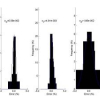Free Online Productivity Tools
i2Speak
i2Symbol
i2OCR
iTex2Img
iWeb2Print
iWeb2Shot
i2Type
iPdf2Split
iPdf2Merge
i2Bopomofo
i2Arabic
i2Style
i2Image
i2PDF
iLatex2Rtf
Sci2ools
100
Voted
CVPR
2007
IEEE
2007
IEEE
Opti-Acoustic Stereo Imaging, System Calibration and 3-D Reconstruction
Utilization of an acoustic camera for range measurements is a key advantage for 3-D shape recovery of underwater targets by opti-acoustic stereo imaging, where the associated epipolar geometry of optical and acoustic image correspondences can be described in terms of conic sections. In this paper, we propose methods for system calibration and 3-D scene reconstruction by maximum likelihood estimation from noisy image measurements. The recursive 3-D reconstruction method utilized as initial condition a closed-form solution that integrates the advantages of so-called range and azimuth solutions. Synthetic data tests are given to provide insight into the merits of the new target imaging and 3-D reconstruction paradigm, while experiments with real data confirm the findings based on computer simulations, and demonstrate the merits of this novel 3-D reconstruction paradigm.
3-d Reconstruction Paradigm | 3-d Scene Reconstruction | 3-d Shape Recovery | Computer Vision | CVPR 2007 | Noisy Image Measurements | Recursive 3-d Reconstruction |
Related Content
| Added | 12 Oct 2009 |
| Updated | 28 Oct 2009 |
| Type | Conference |
| Year | 2007 |
| Where | CVPR |
| Authors | Shahriar Negahdaripour, Hicham Sekkati, Hamed Pirsiavash |
Comments (0)

